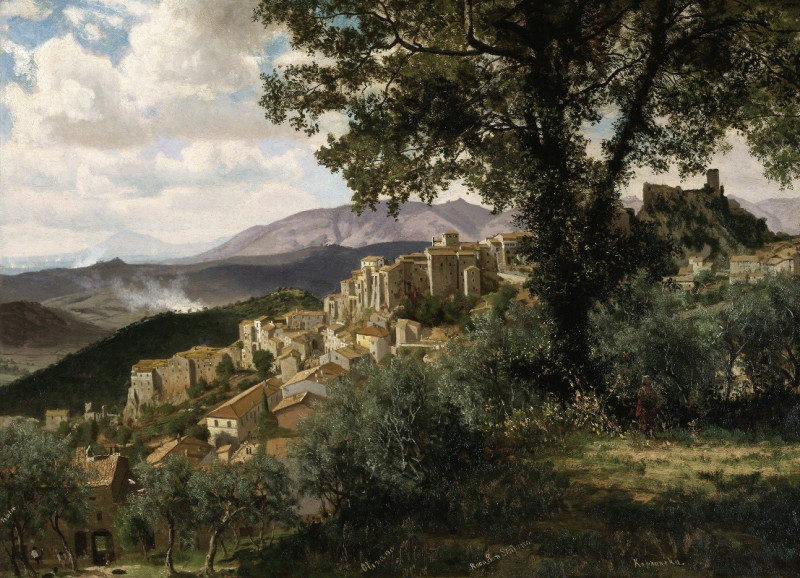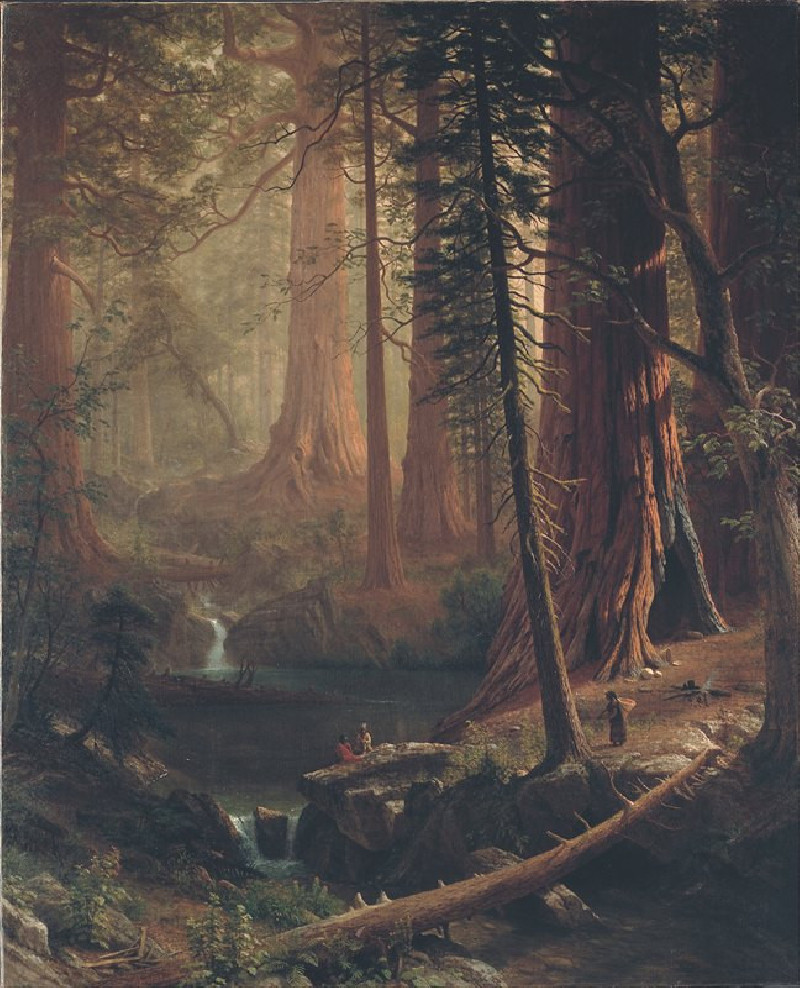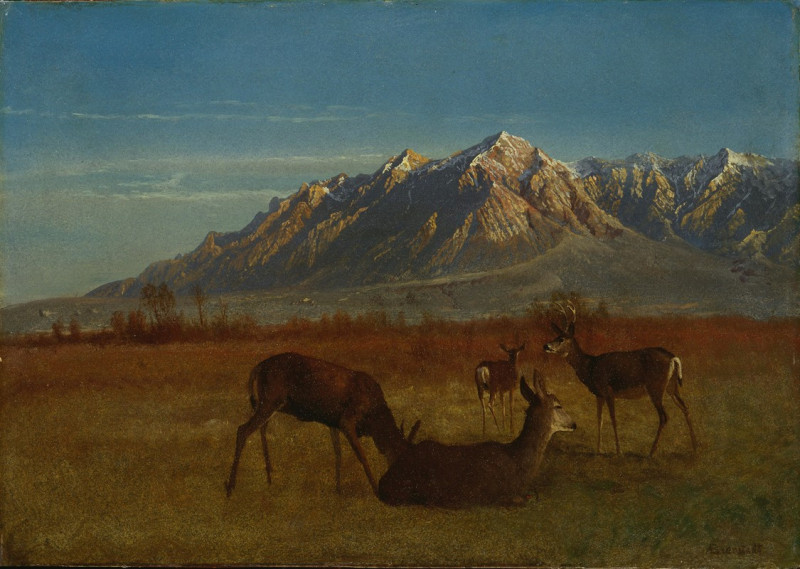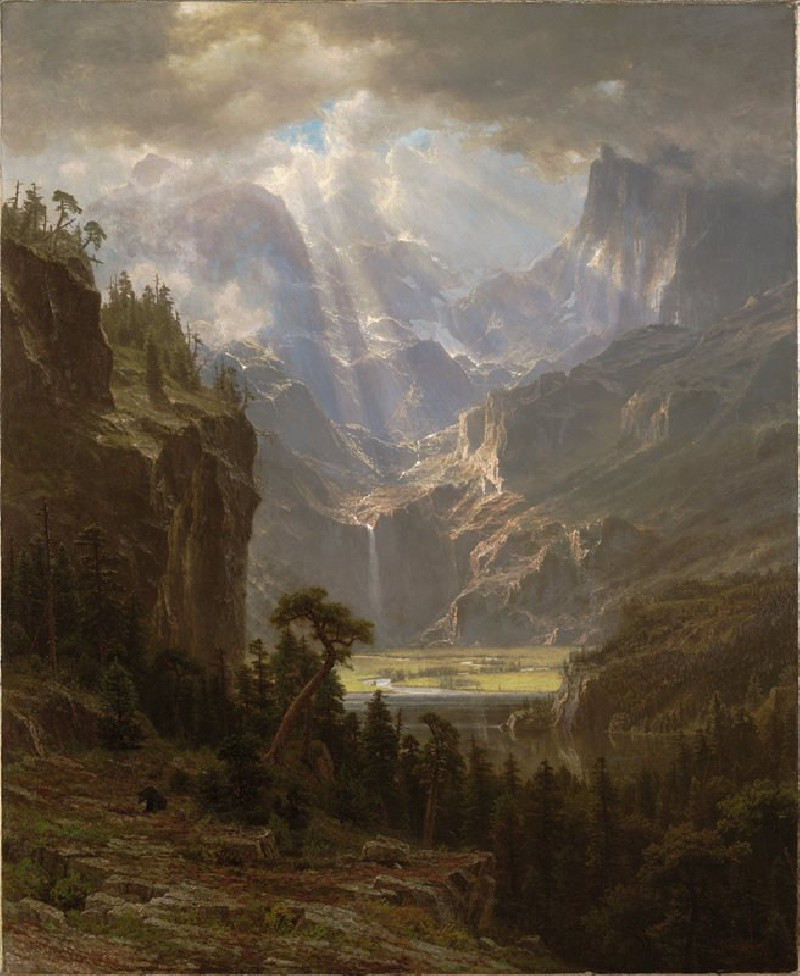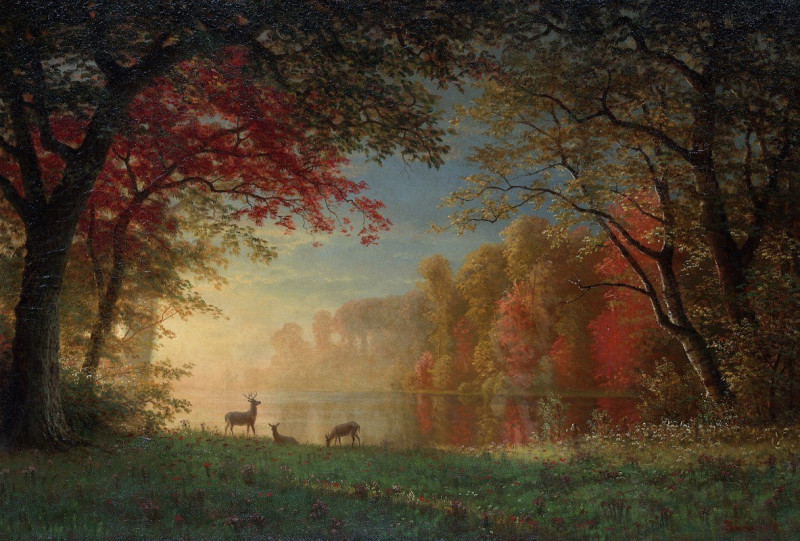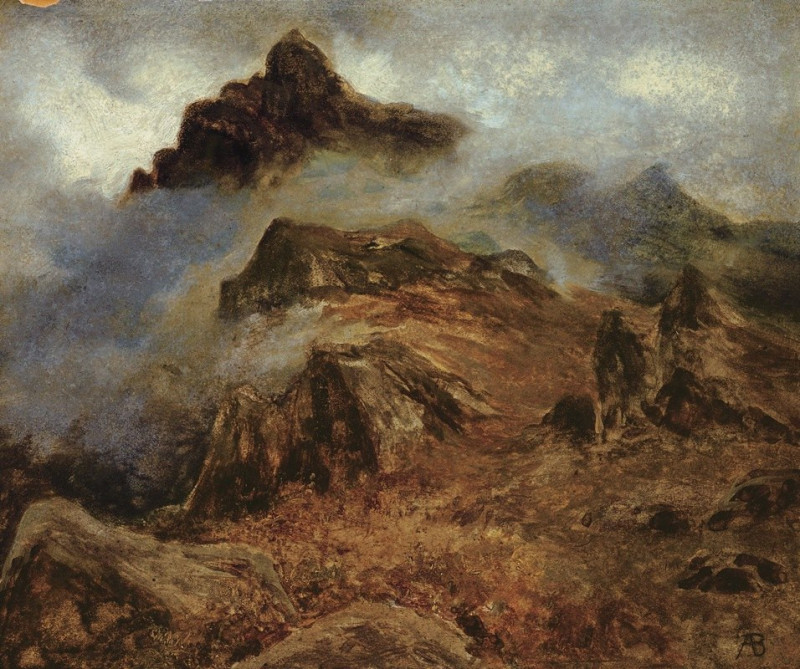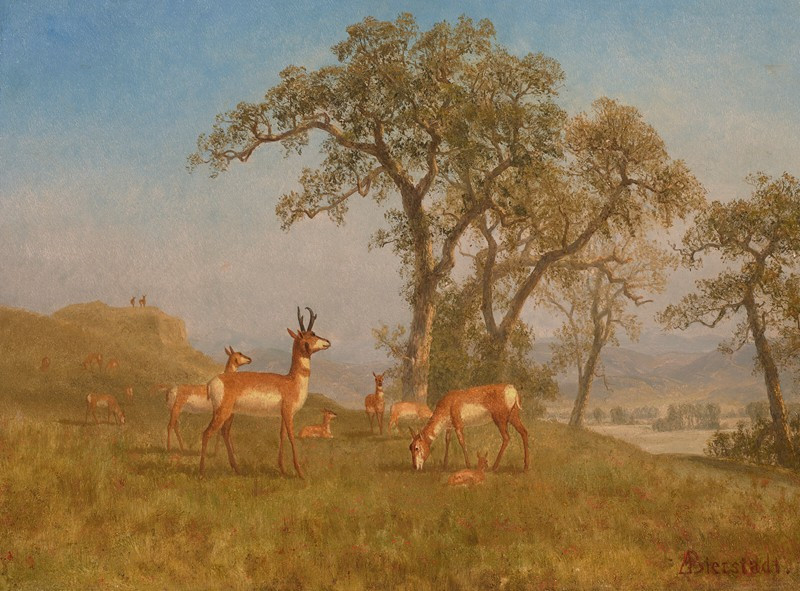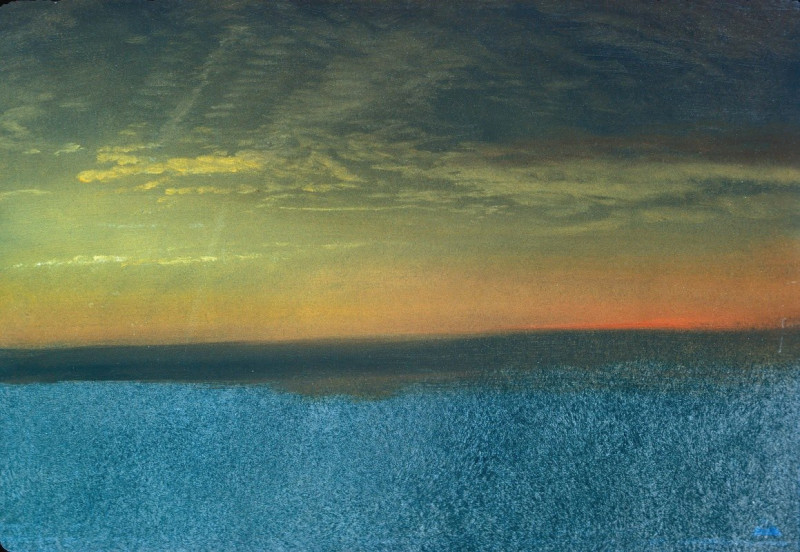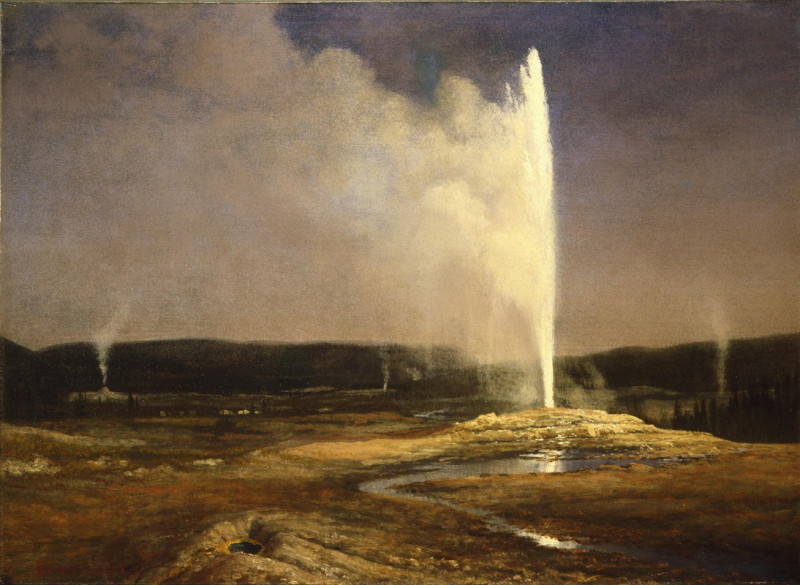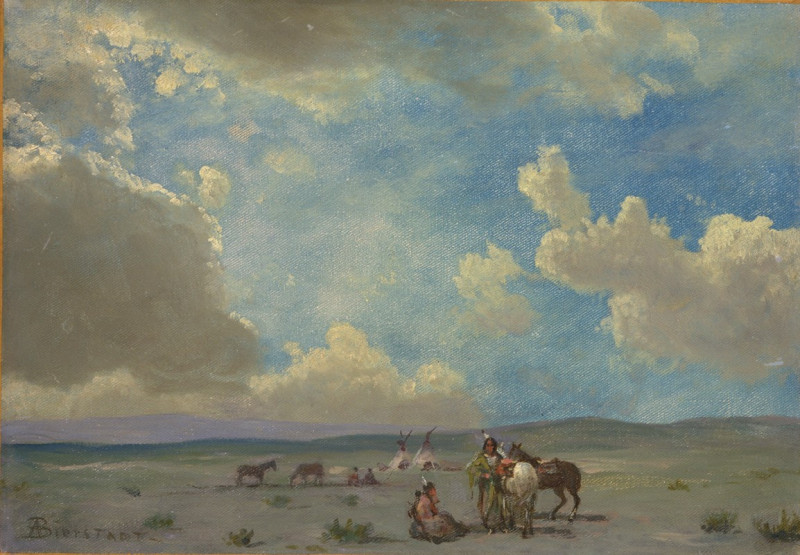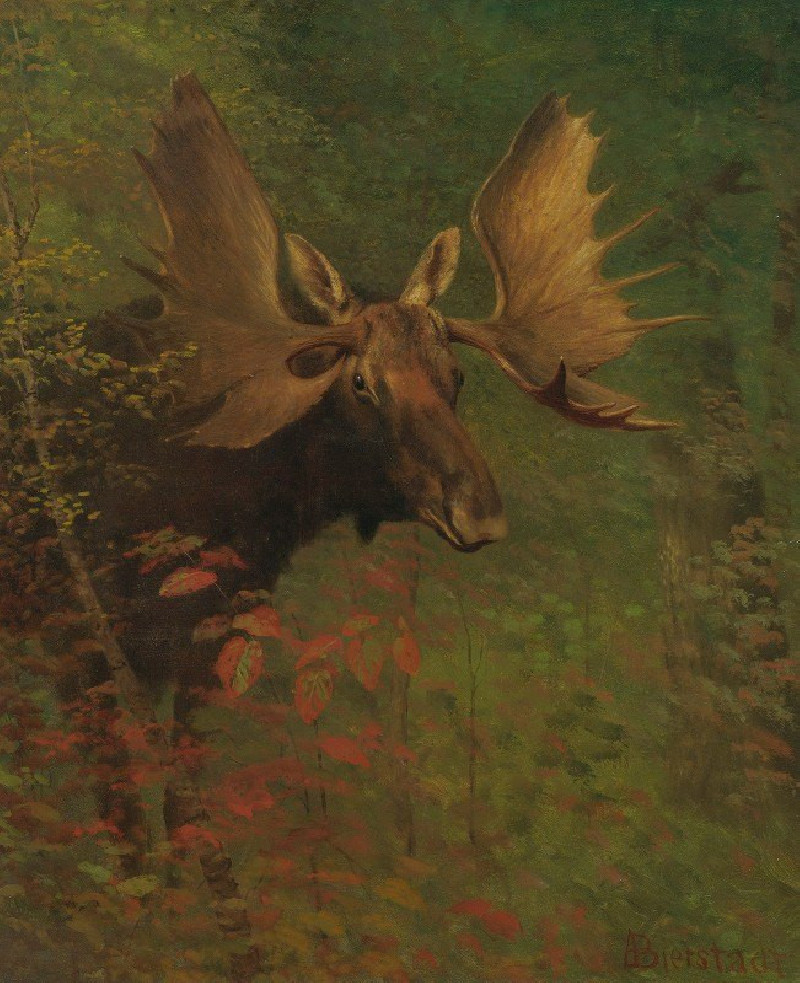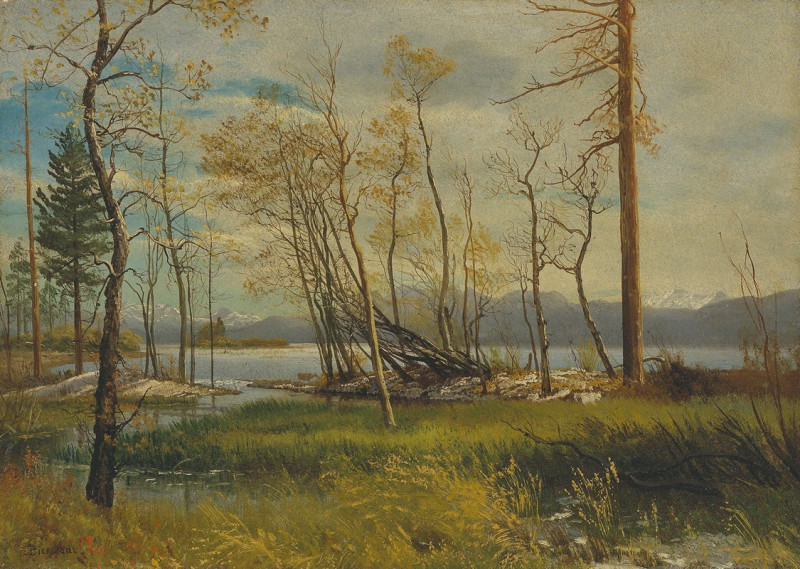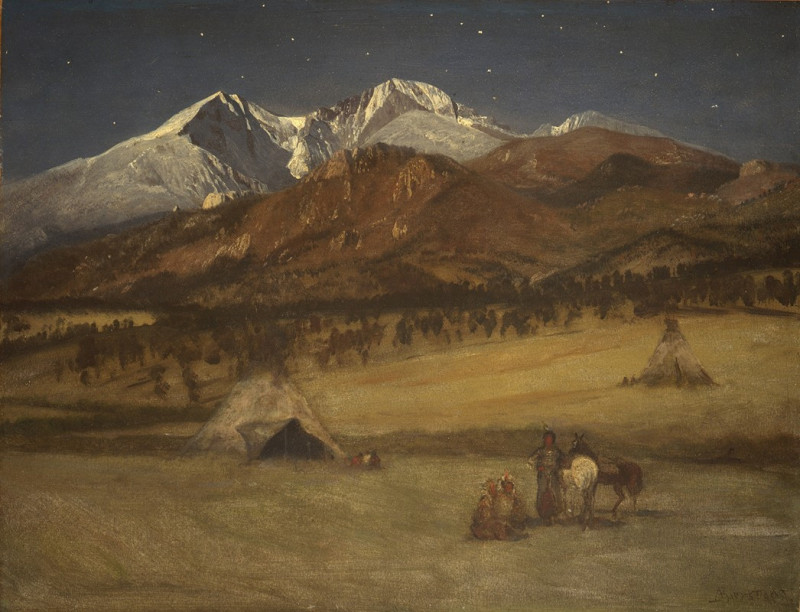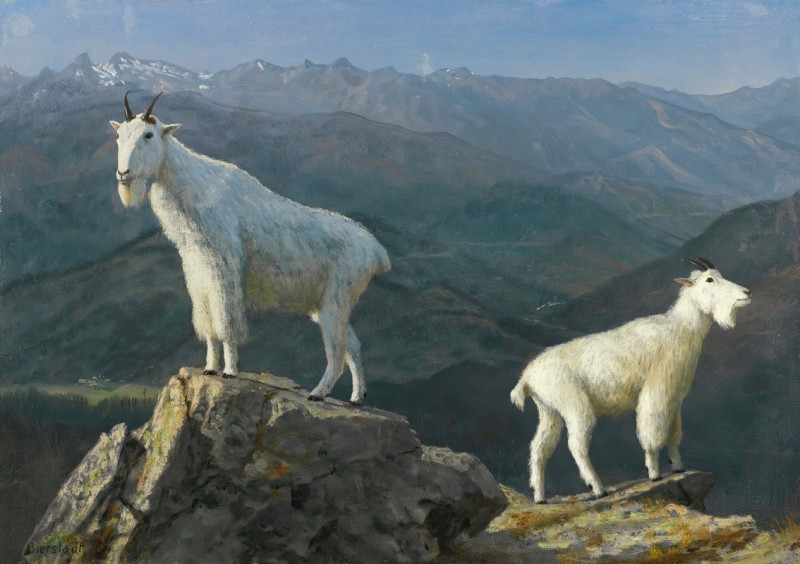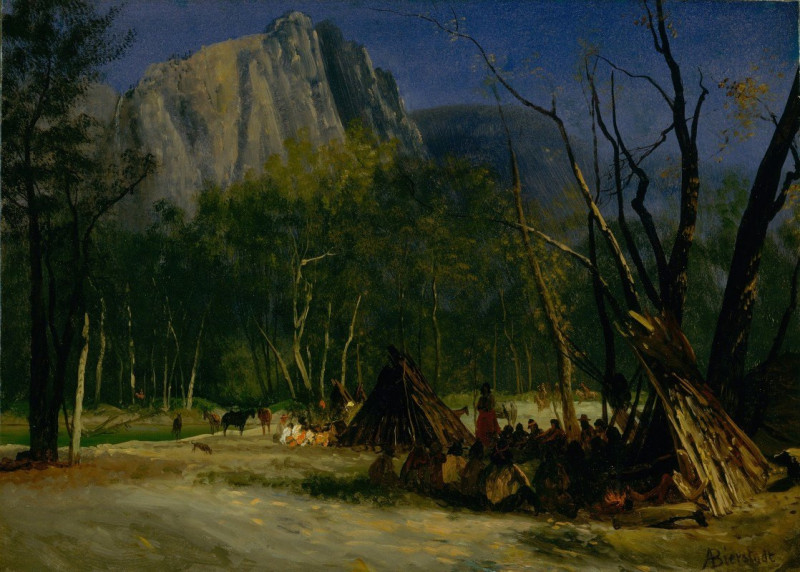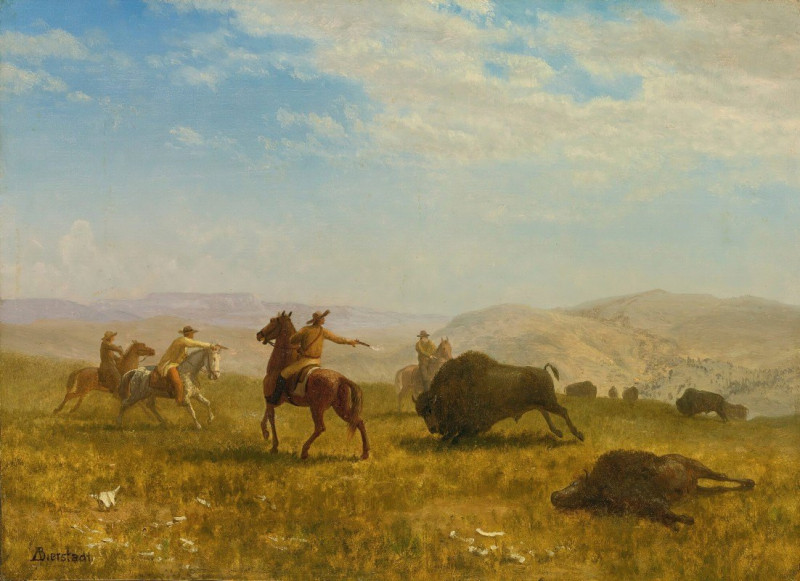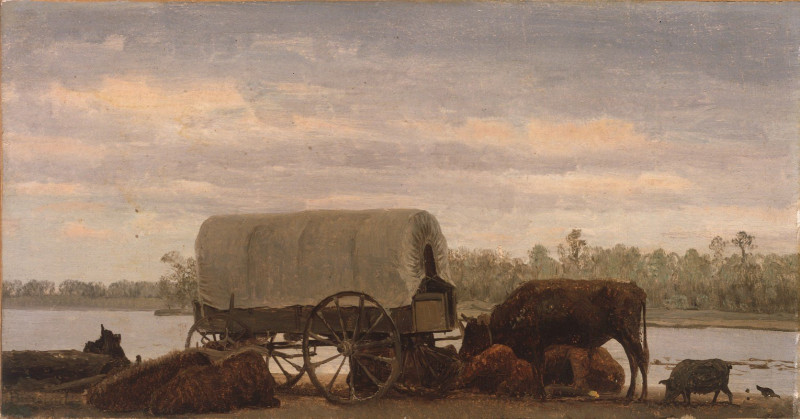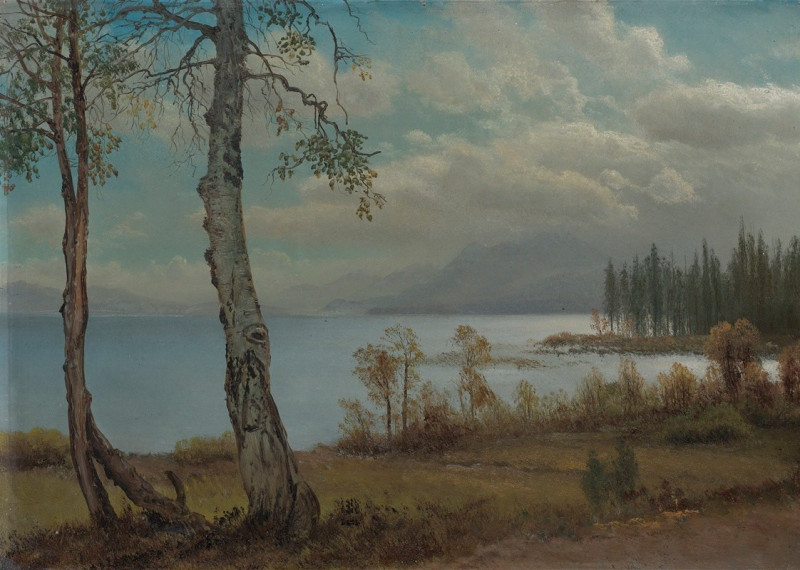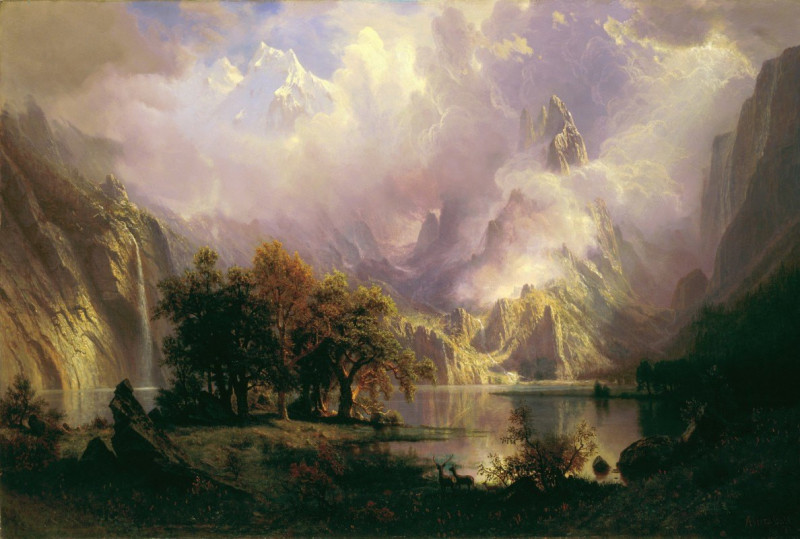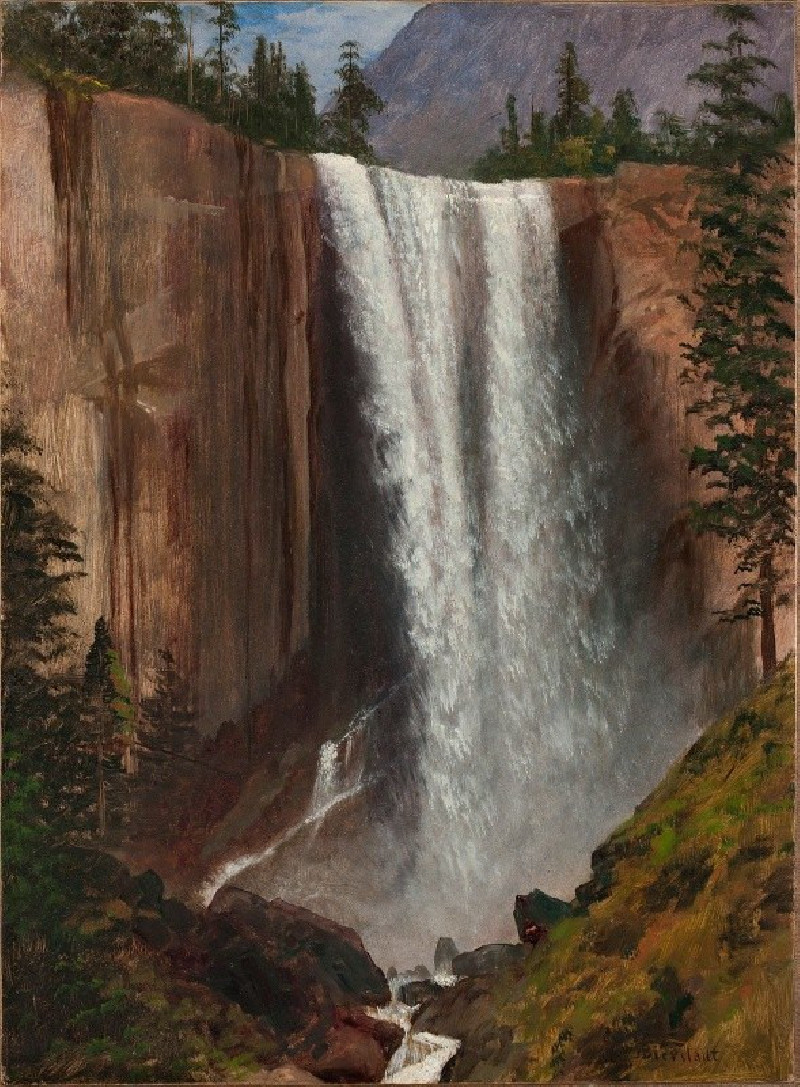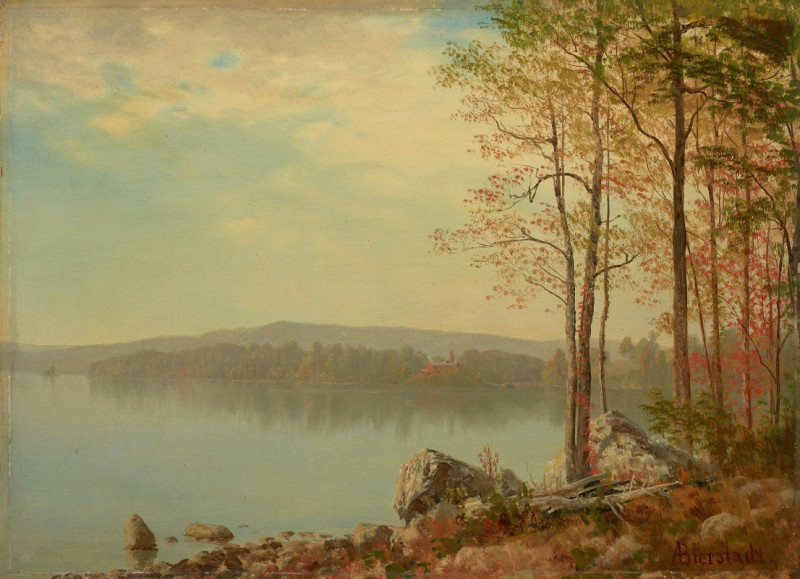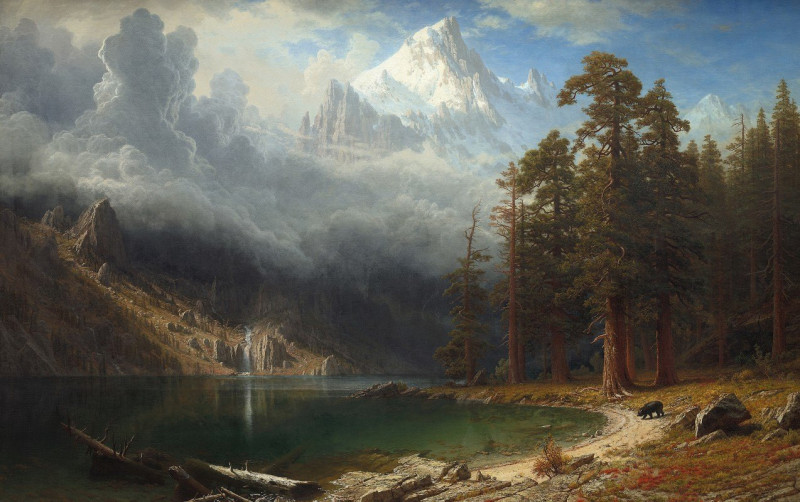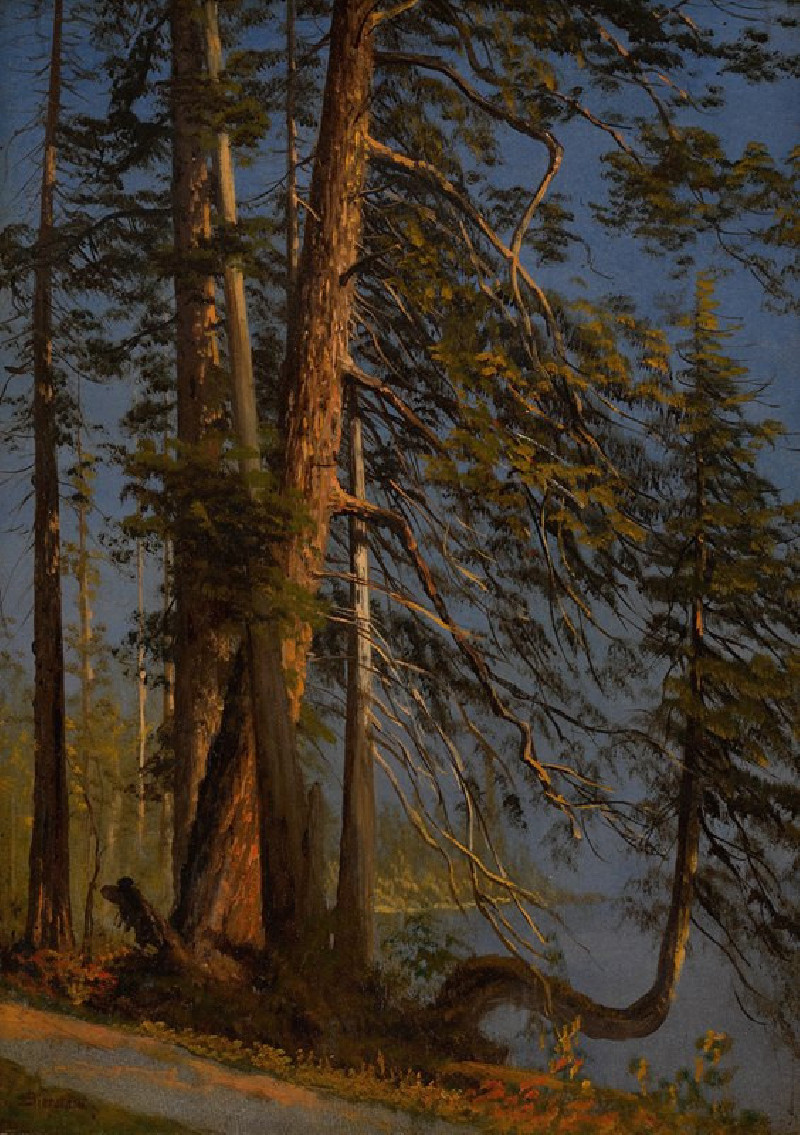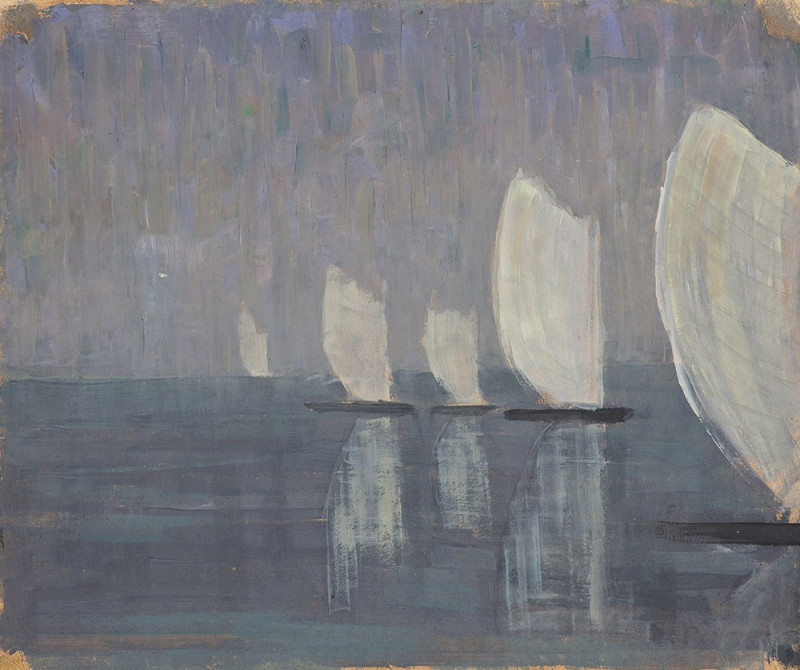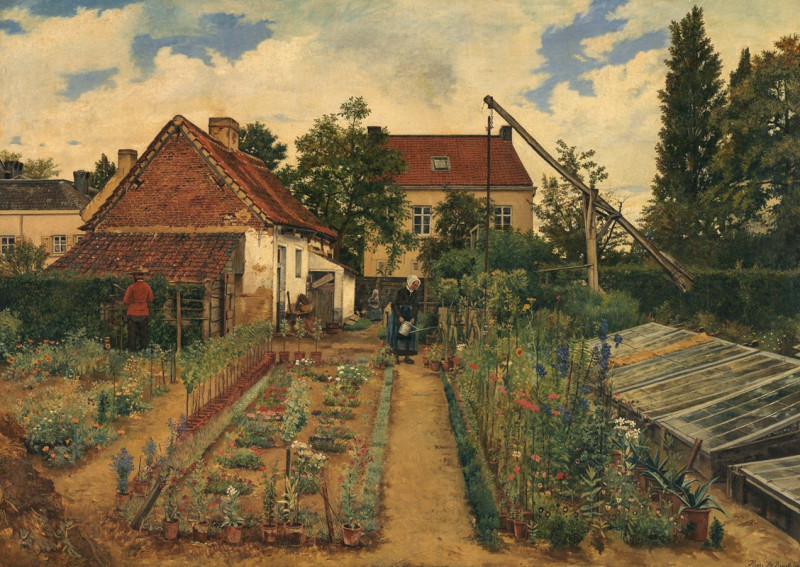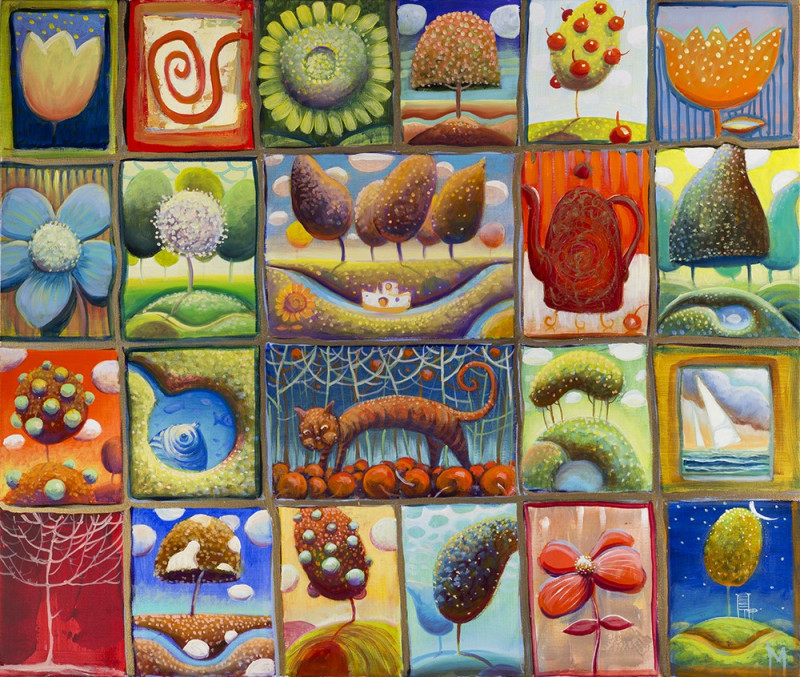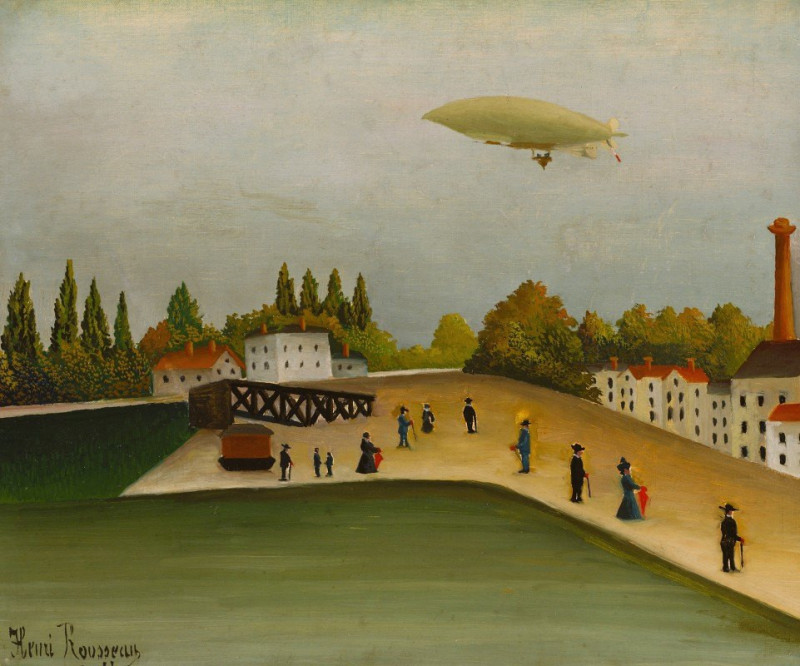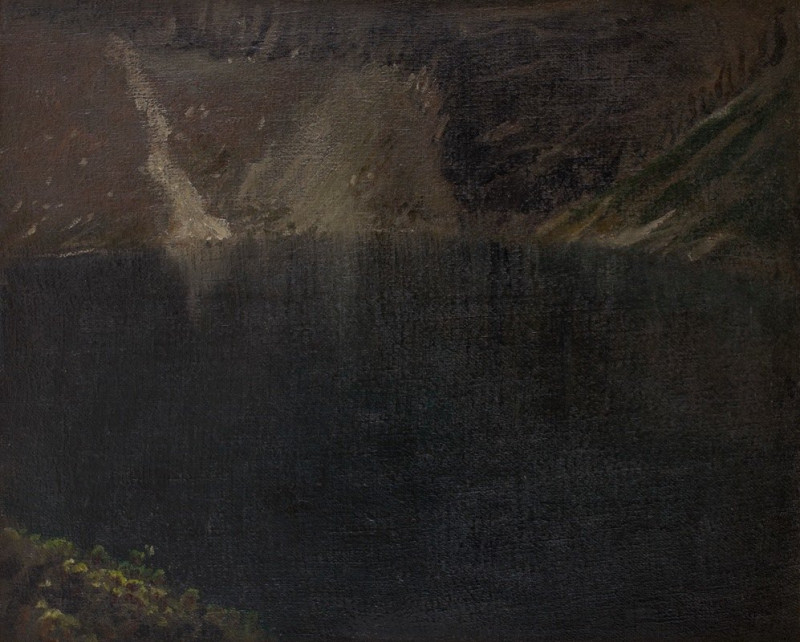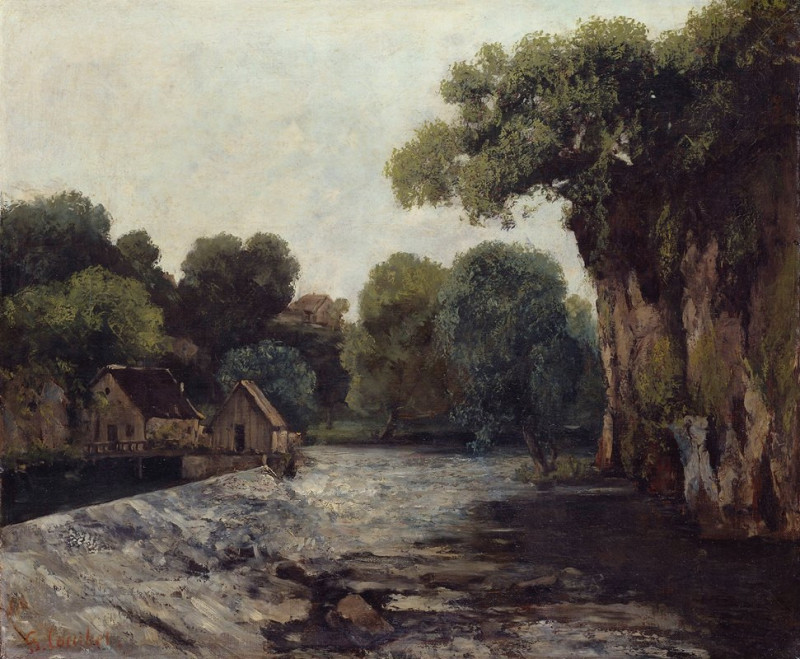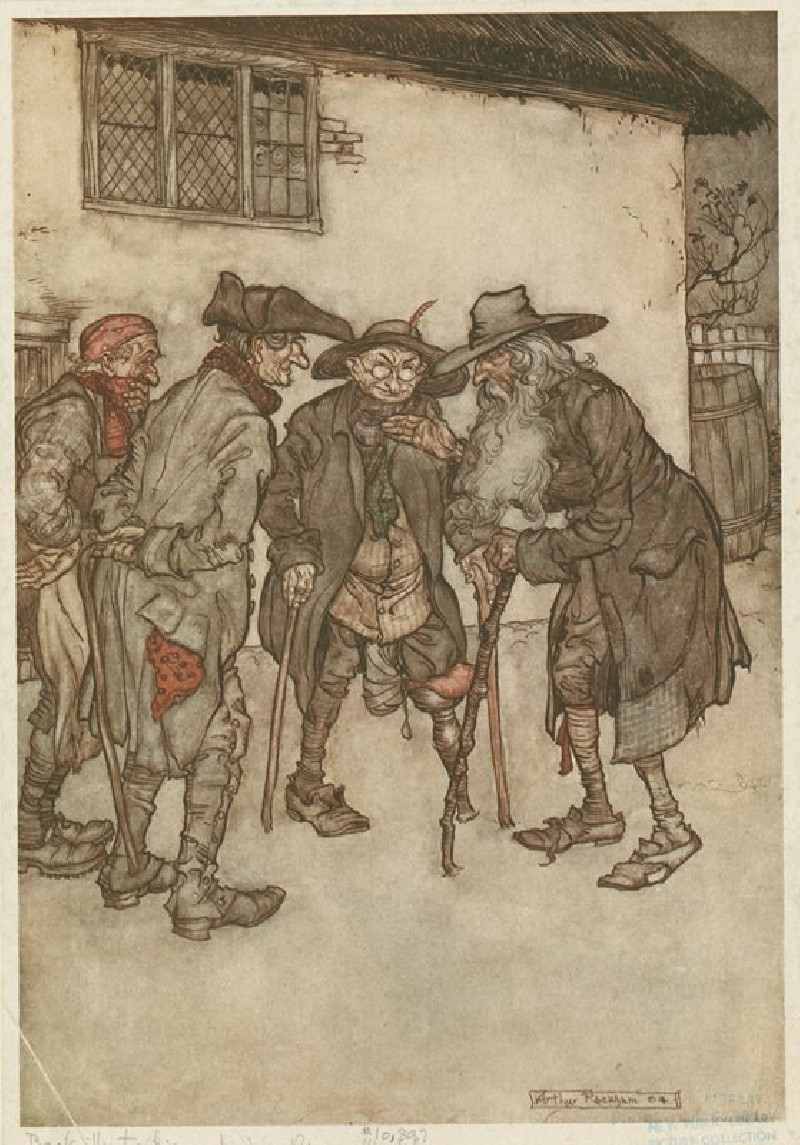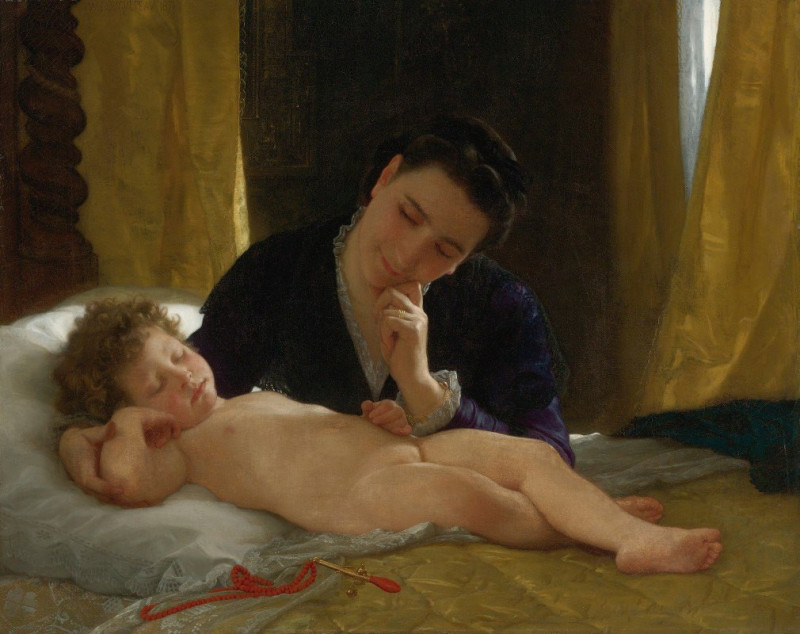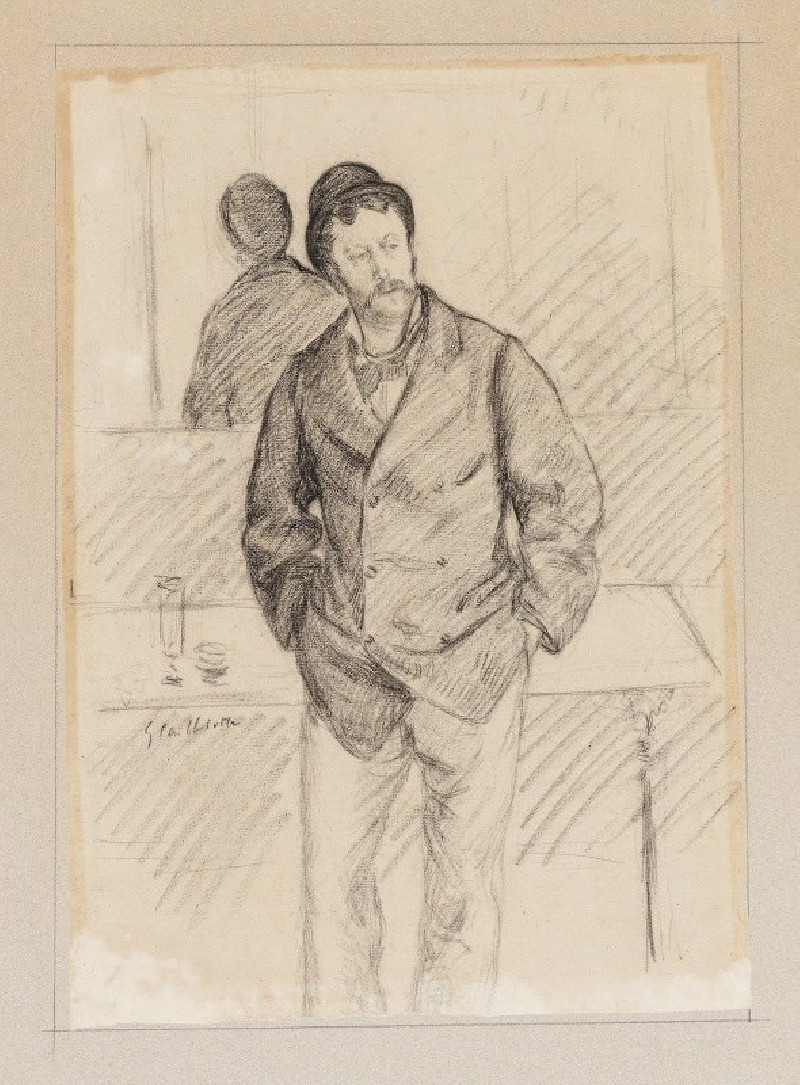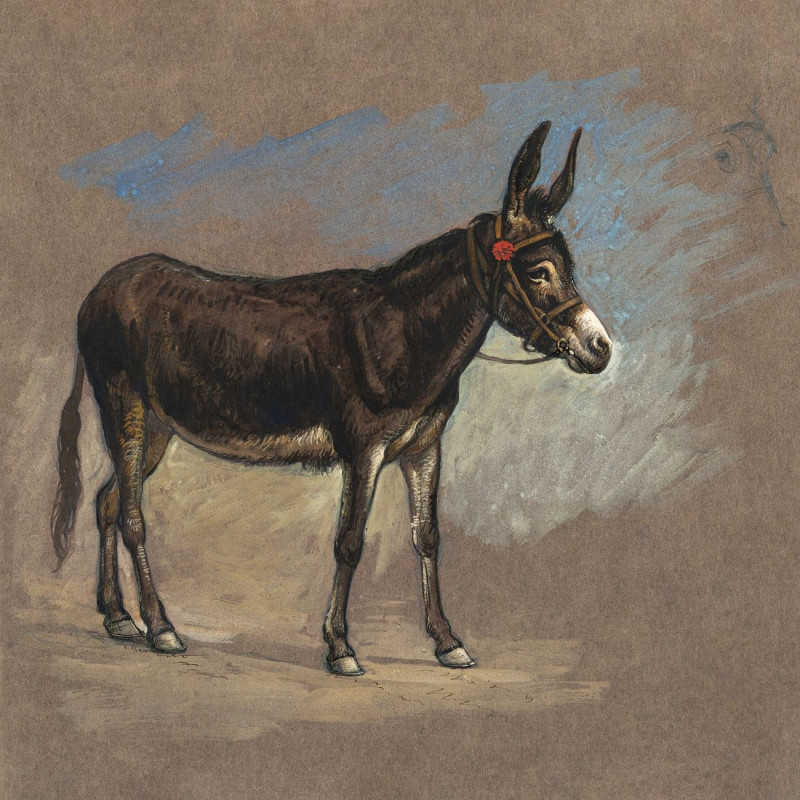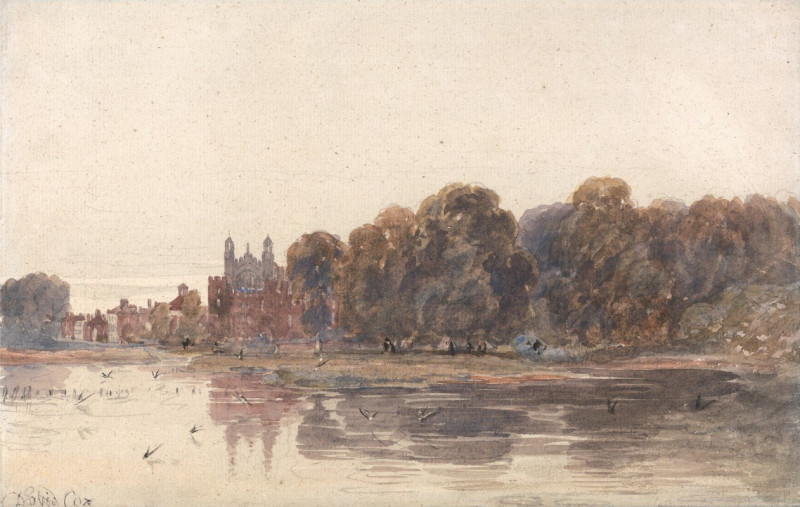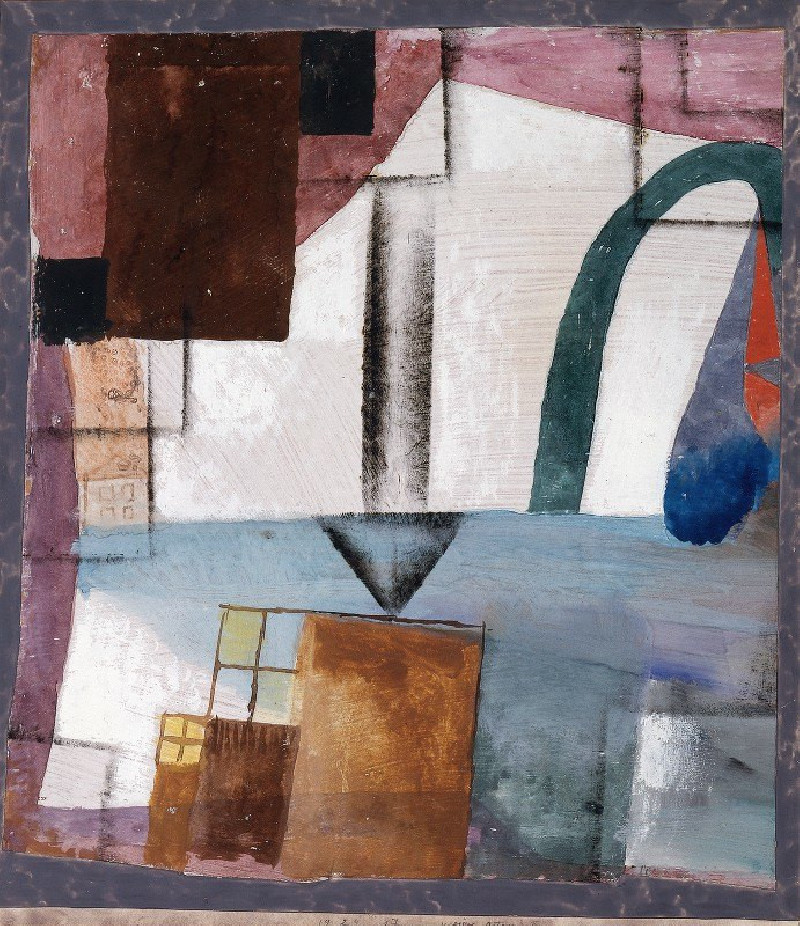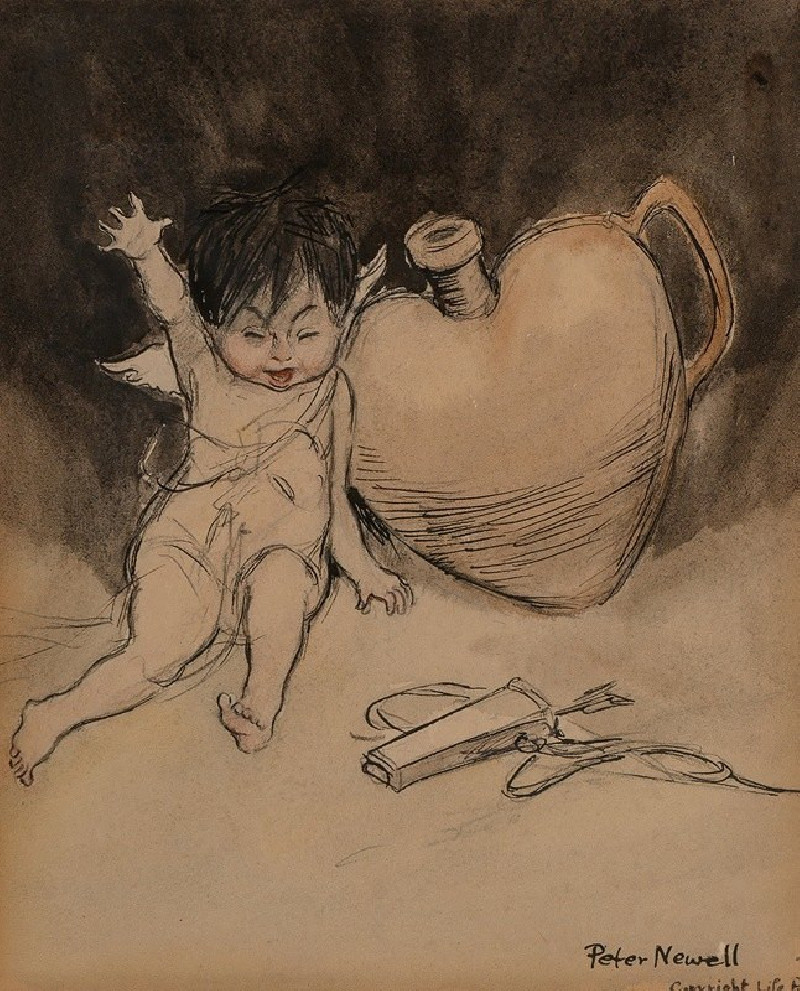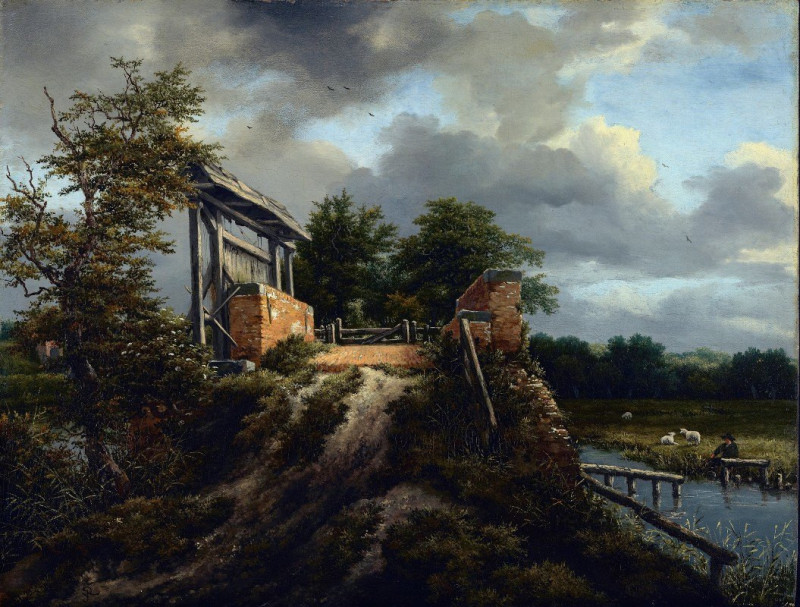Olevano (1856–57)
Technique: Giclée quality print
Recommended by our customers
More about this artwork
Albert Bierstadt, renowned for his vast and luminous landscapes, ventured into the heart of Italy to capture the enchanting essence of Olevano, a quaint hill town imbued with timeless charm. His painting, "Olevano" (1856-57), is a masterpiece that transports viewers into a serene Italian landscape, evoking a sense of peaceful isolation and romantic allure.In "Olevano", Bierstadt masterfully renders the texture and feeling of the Italian countryside. He portrays a cluster of weathered buildings perched atop a verdant hill, enveloped by lush, undulating forests and olive groves that seem to whisper stories of the past. The foreground is adorned with detailed, leafy foliage and trees, showing his meticulous attention to nature's intricate forms.The composition expertly leads the viewer’s eye through the painting—from the darkened, rich greens of the woodland foliage in the foreground, up the rolling slopes dotted with stone structures, to the soft, misty blues of the distant mountains. This creates a profound depth, inviting the observer to step into the painting and explore the scenery.Bierstadt's use of light enhances the dramatic yet serene ambiance, with sunlit rooftops creating a stark contrast against the cool shadows and the expansive, cloud-filled sky. This interplay of light and shadow is not just a technical achievement but also serves to highlight the tranquil beauty of Olevano, capturing a fleeting moment of stillness and beauty."Olevano" by Albert Bierstadt is not merely a visual exploration of a geographical location; it is an invitation to experience the harmonious quietude and rustic beauty of the Italian landscape, making it a significant work in the annals of landscape painting.
Delivery
Returns
Albert Bierstadt (January 7, 1830 – February 18, 1902) was a German-American painter best known for his lavish, sweeping landscapes of the American West. He joined several journeys of the Westward Expansion to paint the scenes. He was not the first artist to record the sites, but he was the foremost painter of them for the remainder of the 19th century.

